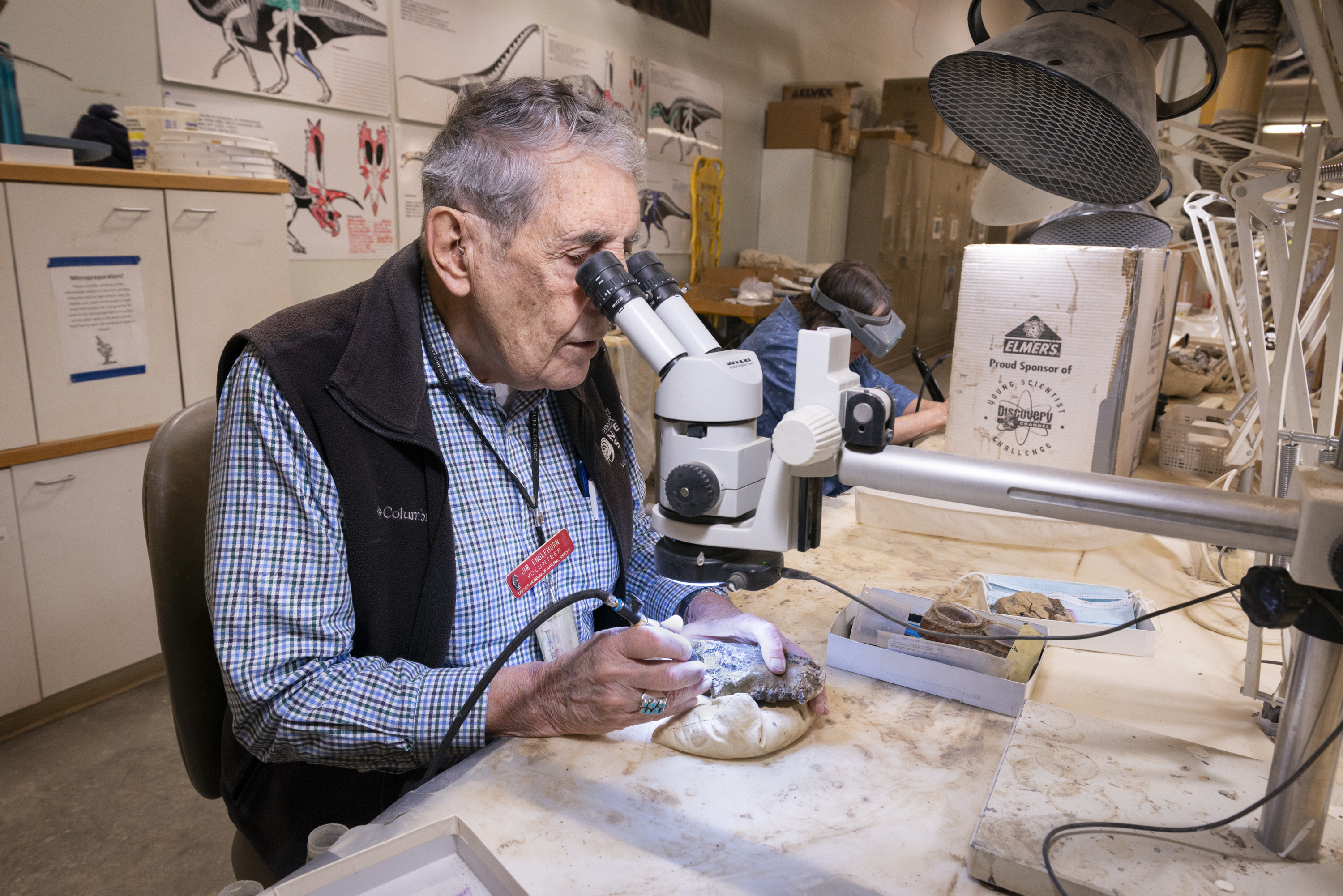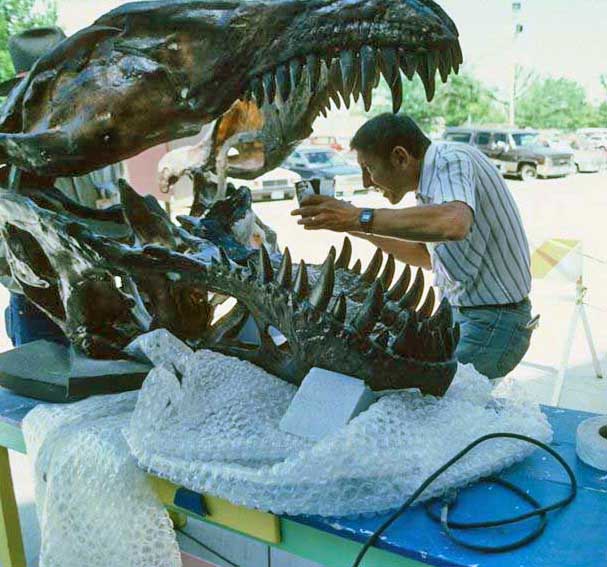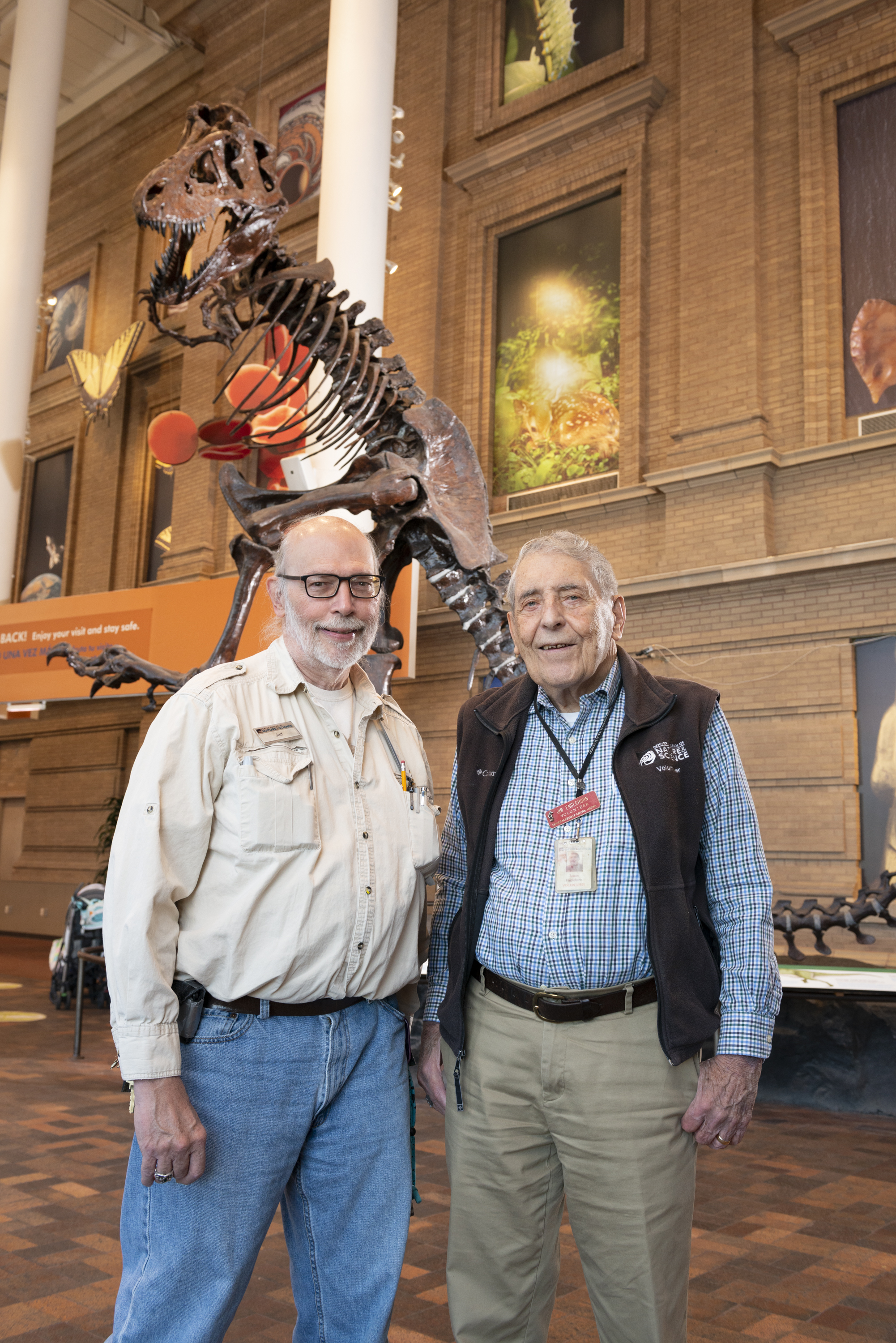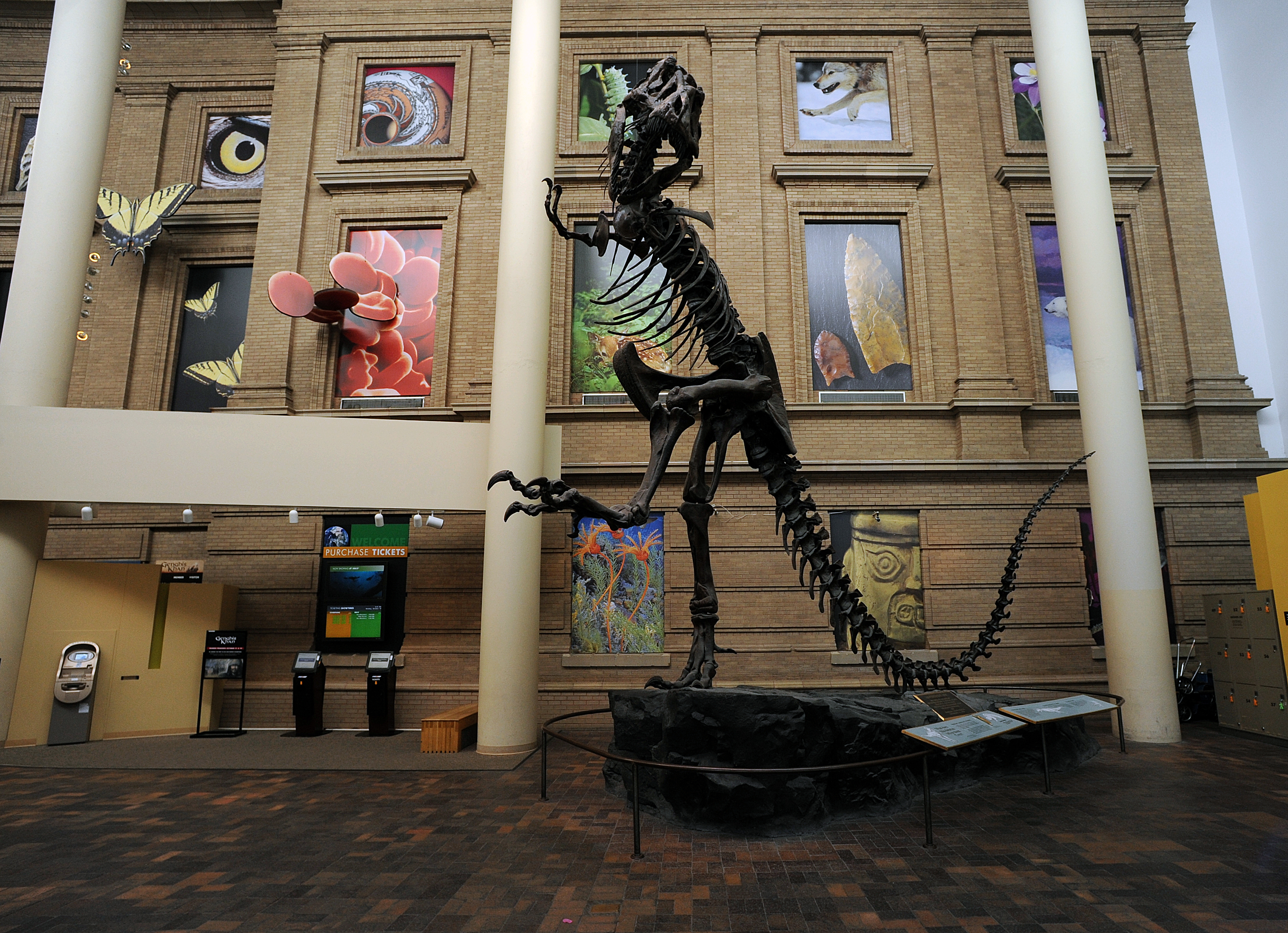

Jim Englehorn, longtime volunteer at the Denver Museum of Nature & Science. (Photo/Rick Wicker)
Following Englehorn’s early retirement from his career in geology for the petroleum industry, he began searching for a meaningful way to pass the time and learn new skills. Volunteering for the Museum seemed like a natural fit, and he soon found himself working in the zoology department – an intentional departure from his professional background that he hoped he would find fulfilling. Unfortunately, his initial experience did not live up to expectations.
“When I got to the point of skinning dead birds from roadkill crashes and that kind of thing, I just didn’t enjoy doing that,” said Englehorn.
But Englehorn soon found his niche in the paleontology department, where in 1987, he became involved with one of the Museum’s most famous undertakings: The T. rex project, which sought to dazzle guests as they entered, ultimately resulting in the iconic front entrance we know today. Jim worked with then-curator Jack Murphy on positioning the skeleton, which came from two different animals and sites, both in Montana. Everyone chipped in; famed paleontologist Robert Bakker designed the mount, and the Museum even worked with local schoolchildren to fundraise for the project.
Murphy, Englehorn and other volunteers worked together to reconstruct the skeleton, positioning the pieces while the iron workers fabricated supports. They'd slip the bones on just so and use Bondo and resin to secure them to the frame. Englehorn vividly recalls sitting on the truck and helping collections manager Jeff Stephenson hold the skull in place on the way to the Museum from Duffy Ironworks, where the skeleton was being assembled.
"I was one of two people holding the skull on top of the cab. We waved at folks out the window during the lunch hour," said Englehorn, recalling the trip back to the Museum from Duffy Ironworks, where the skeleton was being assembled.

Jim Englehorn evaluating the T. rex skull at the Denver Museum of Nature & Science.
In 1987, Englehorn witnessed the T. rex project being mounted and completed. It took two months for four staff members and two volunteers, plus a consulting paleontologist, Robert Bakker, and a crew of metal workers from Dufficy Iron Works, to take it apart and put it back together, first at the Iron Works and finally at the new main entrance of the Museum. The skeleton was mounted using Fiberglas bandages, epoxy and a little polyester putty with an iron armature inside the bones, and a generous amount of concrete for stability. It sits atop a cast of a chunk of New Hampshire granite, which was placed inside the Museum right by the main entrance. This is the first piece that all guests first see as they come in through the doors. This majestic 25-foot-tall structure weighing 1,000lbs has become an icon of the Museum and a local favorite.
The skeleton was mounted in its stance to honor Henry Fairfield Osborn, the paleontologist who named the Tyrannosaurus rex and who was the President of the American Museum of Natural History in New York, where the cast was later made. Osborn had miniature models made of the skeletons of two T. rexes fighting and wanted to mount the original bones in the same way as one of these models. His team, operating in the early 20th Century, didn’t have the technology to accomplish this, but the Denver Museum of Nature and Science did.

Curator Jeff Stephenson and Jim Englehorn showcasing their once in a lifetime creation. (Photo/Rick Wicker)
For Englehorn, it wasn’t just the big-ticket items that got his heart pumping; he equally loved the microscopic work of cleaning and preparing fossils for collections or display. Englehorn's favorite experience was being the first person to see a fossil after peeling away the layers of rock.
Over the years, Englehorn ended up making his mark throughout the Museum – from his initial foray into zoology to anthropology and geology. One of his more remarkable contributions involved the discovery of newspaper clippings dating back to the 1800s that the Museum’s founder, Edwin Carter, had used to stuff bird specimens!
Englehorn also made contributions to fieldwork through his wildflower photo slides, which were used in the Explore Colorado diorama hall. In addition, his amphibian and fossil work has been integral to the Museum's research. One specimen, the Permian salamander Huskerpiton Englehorni, an amphibian from SE Nebraska, even bears his distinctive last name.
But it was the relationships he made with curators and other volunteers that have made his time with the Museum extraordinary.
“It was a social environment as well as a working environment up there in the paleo lab. I have lasting friendships with people,” said Englehorn.
Englehorn used to volunteer three days a week, but sadly, since the beginning of the COVID-19 pandemic, the opportunities for him to volunteer and see his friends have dwindled.
“This pandemic has just kind of torn that all apart,” said Englehorn.
At 90 years old, he has been experiencing health issues and has not been able to volunteer regularly for the past several years; however, he hopes to change that and begin volunteering on a weekly basis again soon.
Thanks to the generous support of donors and volunteers like Englehorn, the Museum can continue to grow and expand its programs, creating amazing opportunities and experiences for adults and children alike and bringing about meaningful contributions to the scientific community. Museum volunteers like Englehorn have the extraordinary opportunity to connect with their passions, gain new skills and create positive change in the world, leaving a legacy that inspires future generations.

The iconic dancing T. rex at the Denver Museum of Nature & Science. (Photo/Chris Schneider)